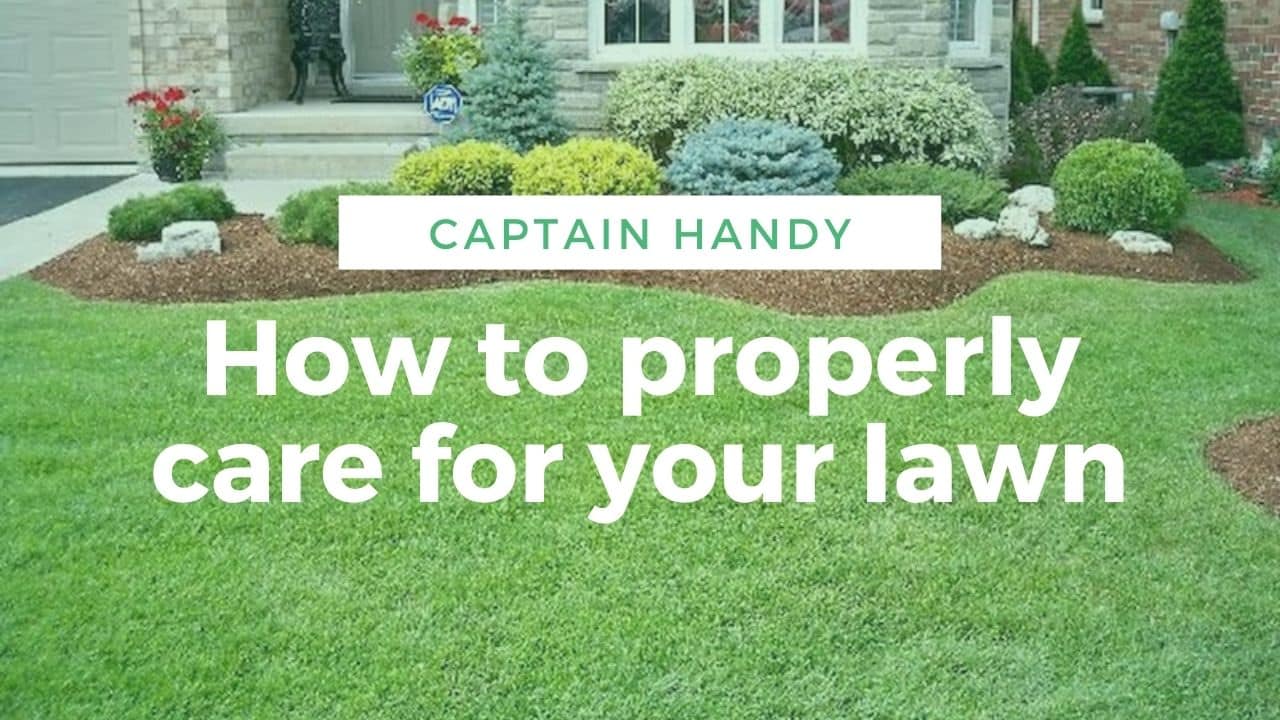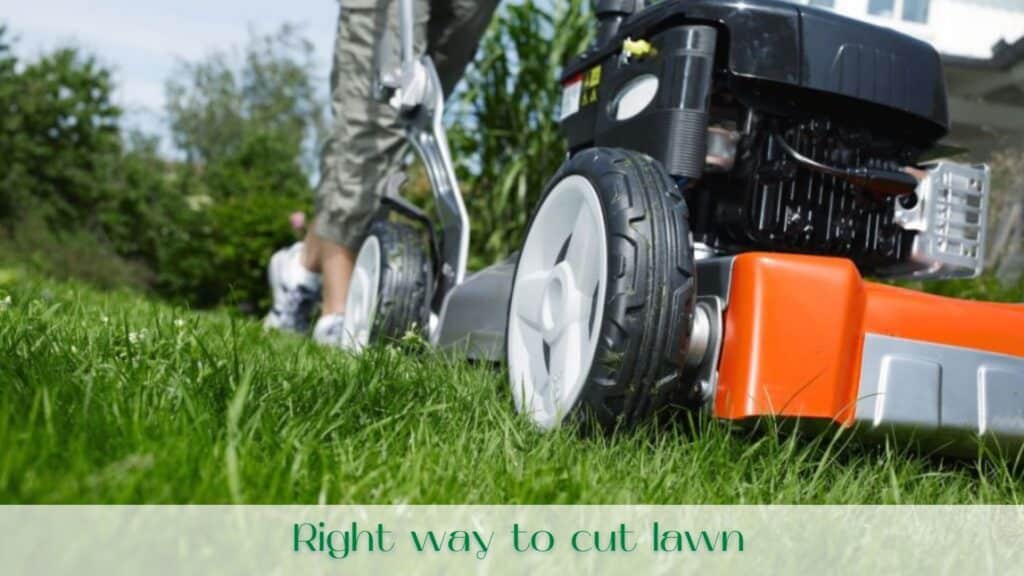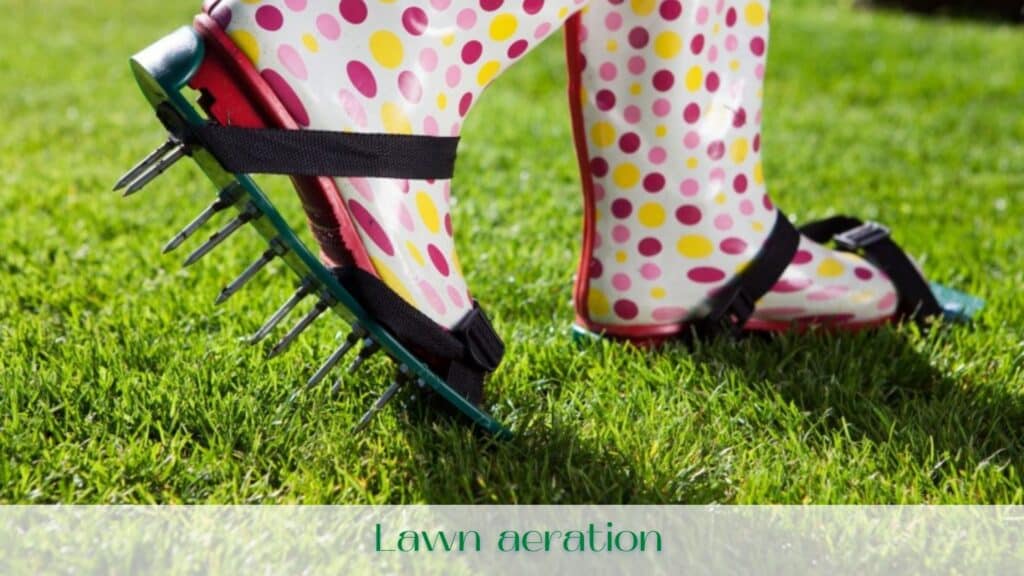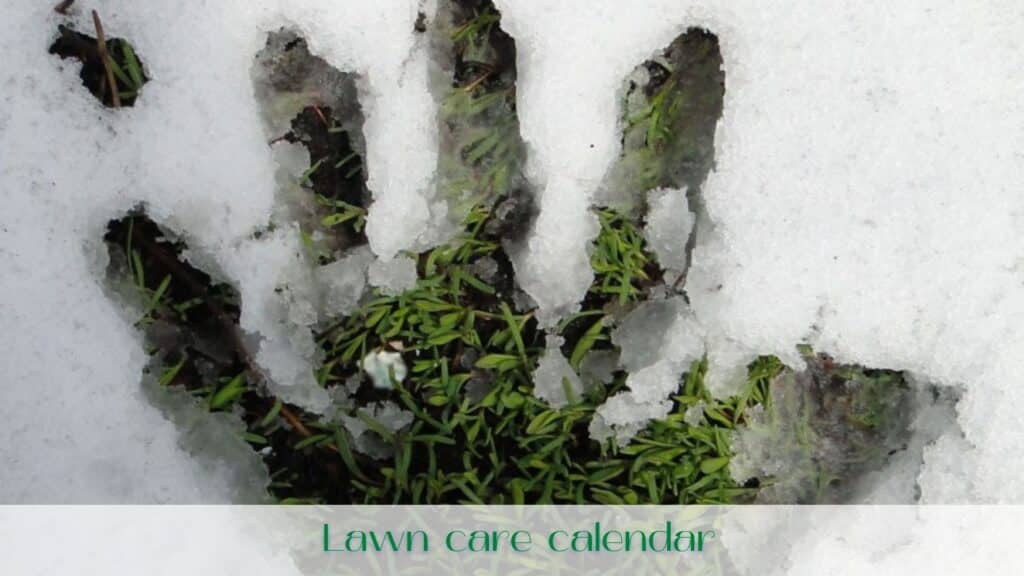
Table of Contents
Lawn care
Lawns in the garden are said to be low-maintenance. You don’t mow or water your lawns – and they grow just fine. The grass mixture for an artificial home lawn is assembled from crops that require attention. Therefore, proper lawn care is a must!
How often should I water my lawn?
It is best to care for and water the turf in the evening or early in the morning. During the day, especially if the sun is blazing, the water evaporates more quickly and the plants have no time to soak up the moisture. Moisture penetrates deep into the soil during the night, saturating the roots of the plants.
Water your lawn with a drip rather than a trickle so you don’t damage the stems or erode the soil around the plantings.
How much watering?
Depends on the soil, the time of the previous watering, and the weather. It is problematic to come up with an exact watering rate. Water the lawn abundantly, but not until puddles appear. To understand whether the grass has enough moisture, check the soil to a depth of 100 mm. If it’s dry, increase the watering.
How to water the lawn correctly?

It also depends on the soil and the weather. In hot weather water the meadow on sandy soils twice a week, in cool weather – once every 10 days. Lawns on clay or loam are not water intensive. Irrigate the grass as needed, the soil should have time to dry out.
Water the lawn with your own hands
What to water with?
Guided by the size of the site and the availability of equipment. There are several options:
Watering with your own hands with a garden hose with a spray nozzle. When choosing a hose, pay attention to the number of layers. The more there are, the longer the hose will last. The top layers are designed to protect against the sun, the middle layers are reinforcing, and the inner layers do not allow the development of simple algae. In addition, the hose should be lightweight.
Automatic watering with irrigation systems (sprinklers). Sprinklers – because they simulate raindrops, based on the work of sprinklers and atomizers, which disperse the water jet.
They can be unadjustable circular. They are optimal for small lawns. Several sprinklers can be combined into a system and connected to one water source. You can also set a timer to turn on.
Movable models rotate to irrigate areas one at a time.
Irrigation systems are often hidden underground. They are optimal for large areas, more than 6 acres. Sprinklers in such systems can be aboveground or underground (recessed), which are retracted only during irrigation.
It is not easy to conduct underground irrigation systems with your own hands. Usually this is done by specialists-engineers.
Lawn mowing
Lawn mowing is not just a matter of aesthetics. Cutting the grass is necessary for the vegetative development of plants. This way they bush better. Their rhizomes grow and create a dense turf.
What’s the right way to cut my lawn?
Mow when it is dry. But if the grass is overgrown, it’s better to mow when it’s cloudy or early in the morning – when there is plenty of dew. Lawn mower blades are less likely to get dull.
The grass tilts in the direction you mow, so change the direction of the mower with each cut. The grass will be dense and straight. And if you mow on time, you won’t have any gaps that occur due to poor light penetration in the lower parts of the grass.

It is better to collect the grass cuttings and put them in compost. Mulch makes an excellent organic fertilizer, rich in trace elements and humus. On hot days you can leave mowing on the mowed area for 2-3 days to retain more moisture in the soil.
How often should I mow the lawn?
Mowing the lawn too often is not necessary. On average, it is done once every 1-2 weeks, so that the grass has time to grow, get stronger and transfer energy to develop the root system.
The first mowing after winter is different than usual. Mow the meadow when the grass has grown to 10 cm. Mow on ⅓ of a stalk to allow the grass to recover faster after the cold weather. Set the mower blade at its highest level, at least 8 cm. This procedure will slow the growth of weeds. After a few “over the top” cuts, they will stop growing altogether. For the rest of the time, cut more, but leave at least 40 mm if the grass is growing intensively. Too short stems weaken the roots faster and the soil dries out more often. Leaving the grass longer will weaken the stems.
If you don’t know when the last time you mowed grass, use the weather as a guide. Grass grows at a temperature of 5 °C or more. Keep an eye on the temperature to decide when you want to mow last.
What should I mow my lawn with?
To avoid making the mowing of the meadow a heavy chore, choose the “right” tool.
Electric or gasoline trimmer is more convenient to mow than the usual lithe mower. The trimmer is light and maneuverable, but noisy in operation. With a scythe there is no such problem, but it requires skill and quickly becomes blunt.
Lawn mowers make mowing easier. Unlike trimmers, they have grass collectors that collect and shred the mowing. You won’t have to rake the grass like the old-fashioned way. When choosing a mower, pay attention to the power of the motor. The more powerful, the tougher it is.
Electric mowers are easy to use: there’s no need to fill up with gasoline and oil. But you have to worry that the wire won’t get under the knife, that the engine won’t burn, that the wire will be enough for the whole perimeter of the lawn…
Gasoline models are more practical. If the mower has a 2.5 mm line, you can cut even raspberries and currants. By buying removable attachments, you can easily turn your lawn mower into a cultivator or snowblower.
Riders and mini-tractors mow large areas that are difficult to care for by hand.
How to remove moss and weeds from a lawn
Moss in the field appears because of unevenness of the soil, strong compaction or high acidity of the soil, as well as a lack of nutrients and poor soil drainage. Too low cuttings and heavy shading also contribute to its appearance.
To remove moss, determine and eliminate its causes. Level the soil. If the soil is acidic, lime it. For nutrient-deficient soil, a complex fertilizer is necessary. To eliminate moss in the lawn due to heavy shade, replace the grass with a less fanciful one. Plant red fescue or meadow bluegrass.
If large areas are affected by moss and the above methods have proved ineffective, use chemicals to remove the moss or weeds.
Treat the clearing with a chemical solution on a warm, dry morning. After two days, water it. The moss will turn black two weeks after treatment. Rake it off and replenish the gaps with grass.
Weed control is effective in two ways – weeding or chemical treatment. The most reliable way to kill weeds is by hand, digging them up by the root. This gives good results, but is laborious and time-consuming. And in a large meadow it is almost unrealistic.
When there are many weeds and the area under the grass is large, it is better to use herbicides. Experts recommend that before landscaping a meadow, treat the area with herbicides of continuous action. When they dry out the weeds, sow the grass.
In a green and flowering meadow, use selective herbicides that kill a particular type of weed without damaging the lawn crops. Selective herbicides are good because they kill not only the stems but also the root system of the weeds. Chemical weed treatments are best done on a warm, windless day when the grass is dry.
To keep your glade green without weeds, regular mowing and watering are enough. They increase the density of the grass carpet and turfgrass, thereby suppressing weeds. Annual weeds will die from frequent mowing.
Lawn fertilization and nutrition
Fertilize the grass three times a year – in spring, summer and fall. Timely fertilization strengthens the grass and helps eliminate weeds.
Follow the manufacturer’s recommendations for the amount of lawn fertilizer and the order in which it should be applied. If you over fertilize, you can harm your lawn and simply burn the grass.
When choosing what to fertilize your lawn with, consider seasonality. Spring and summer fertilizers contain a lot of nitrogen, essential for active grass growth. Fall fertilizer has more phosphorus and potassium, which strengthens roots and increases resistance to cold.
How do I fertilize my lawn?
After mowing, before watering. It is best to fertilize through a special sieve or with a spreader.
There is an opinion that mowed grass is also a good fertilizer for the lawn. This is a misconception. Grass clippings are useful as a protective layer for turfgrass during the hot season. With the onset of cold weather, it won’t protect against frost, so cover your lawn with cling film.
Lawn aeration and scarifying
Scarifying is the most effective procedure for clearing dry grass, moss, and plant debris from a meadow. By loosening and combing the soil, you will facilitate air and light access to the lower layers of grass and improve fertilizer penetration into the soil.

Scarify lawns as needed, several times a season: in spring after the snow melt, in summer – to remove the remains of grass clippings, in autumn – to clean the lawn from fallen leaves.
Tools for scarifying – fan or ordinary garden rake, lawn blower, scarifiers or special attachments on the lawnmower.
After scarifying, it is useful to aerify the lawn to make sure water, air and fertiliser can reach the roots. To do this, the soil is pierced to a depth of 10-15 cm. You can prick the soil with an ordinary pitchfork (several times a season), or with a pitchfork with hollow tines (once every 2-3 years). There are also special aerators: foot aerators, in the form of sandals worn on shoes with teeth, mechanical and electric.
After aerating, sprinkle coarse sand over the lawn to fill in the holes. Sanding improves soil permeability and renews the soil.
Lawn repair
Leveling and reseeding your lawn
Over time, grass ages and loses its density. If your lawn becomes “bald,” make lawn repairs. To keep your lawn looking well-maintained, resow any gaps in time. It’s best to do this when it’s cloudy or rainy. Before leveling or reseeding, comb the grass with a rake to remove dead plants. To properly reseed, cut out gaps, loosen the soil, add fertilizer, and sow the seeds.
If you need to level the landscaped area from knolls, trim the turf in the protruding areas, bend back and smooth out the excess soil. Do the same if tree roots have started to protrude on the lawn which can damage the lawnmower. Bend back the cut turf, remove the root and return the green layer to its previous position.
Lawn mulching
Mulching is the spreading of a special mulch over the surface of a meadow to correct irregularities in the soil, improve root nutrition, reduce moisture evaporation from the soil.
Mulching a meadow with different mixtures, depending on the type of soil. Often the mixtures include sand, peat and fertile soil mixed in different proportions, sometimes with the addition of leaf mulch.
- mulching prevents the evaporation of moisture from the soil;
- protects the roots from freezing in the winter cold;
- regulates the level of acidity of the soil;
- enriches the soil with nutrients and prevents them from leaching or evaporating from the soil;
- weeds are less likely to germinate through the mulch.
Lawn mulch once a year, usually in early fall, having previously mowed it and cleaned from the felt.
It is equally important to earth the lawn once every five years in the spring or fall. Covering the ground with decomposed organic fertilizer will improve grass establishment and make the turf thicker. Spread the organic mix optimally at a ratio of 7-10 kg per 1m².
Lawn care calendar
Lawn care in spring
Lawn care in spring begins with the first thaw. The lawn after winter is full of moisture, weakened and easily damaged. In March, try not to walk over it too much to avoid potholes or footprint pits. This is especially dangerous for young lawns.

When the top layer of soil has dried, scarify and remove the resulting felt with a fan or regular rake. If you find pockets of grass disease, use a lawnmower to cut as low as possible all the plants in the affected area. Dig it up, loosen the soil with a rake, and only 10 days later sow new seeds.
Lawn care in summer
The main answer to the question “How to care for your lawn in summer” is to water it in time and mow it regularly. Your lawn may need replanting in midsummer. If you notice that the grass is starting to turn yellow, introduce spring fertilizer. By July and August the topsoil will compact little by little, so aerate and mulch to improve air exchange.
Fall lawn care. Getting your lawn ready for winter
Lawn care in September isn’t much different than in August. Mow and water as needed. If there are gaps in the grass carpet after the summer heat, reseed those areas. Fertilize your lawn in the fall in October, using special fall fertilizers. Do not use spring fertilizers with a lot of nitrogen, which the grass does not need with the onset of cold weather.
On a dry day, aerate your lawn to drain rainwater into deeper layers of soil. If this is not done, your lawn will become ice-crusted when frost arrives.
The last mowing of your lawn in the fall is done in late October through November. Ideally, before wintering the high The height of the grass stems should be 60-80 mm. Remove fallen leaves, branches and dry stems from the grass at regular intervals so they do not interfere with ventilation.
In winter, the lawn does not require treatment. The main thing is not to walk on it until there is a snow cover. On an icy lawn, it is advisable to break the ice crust.
